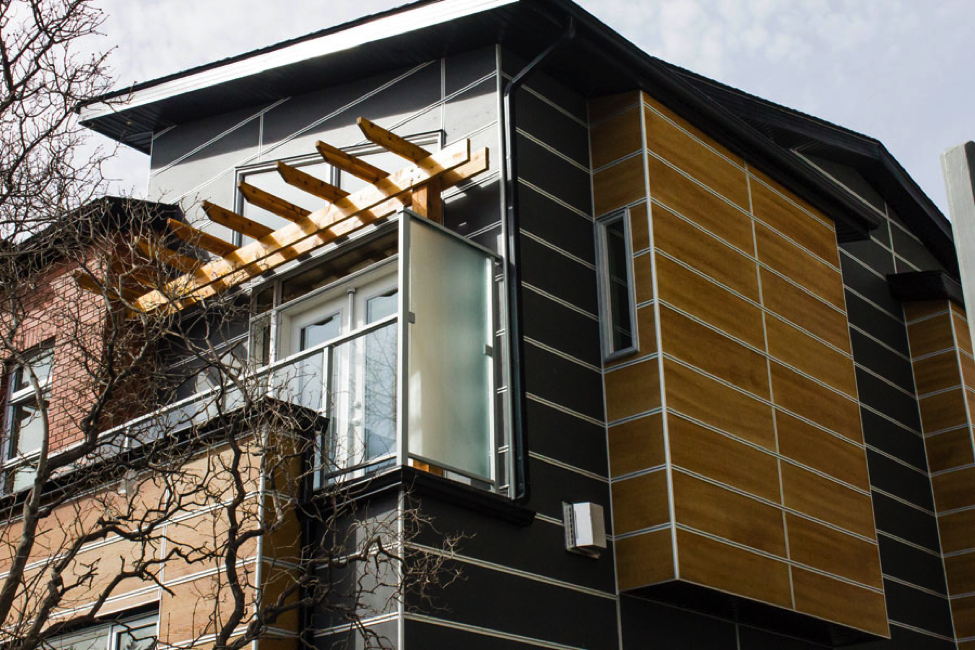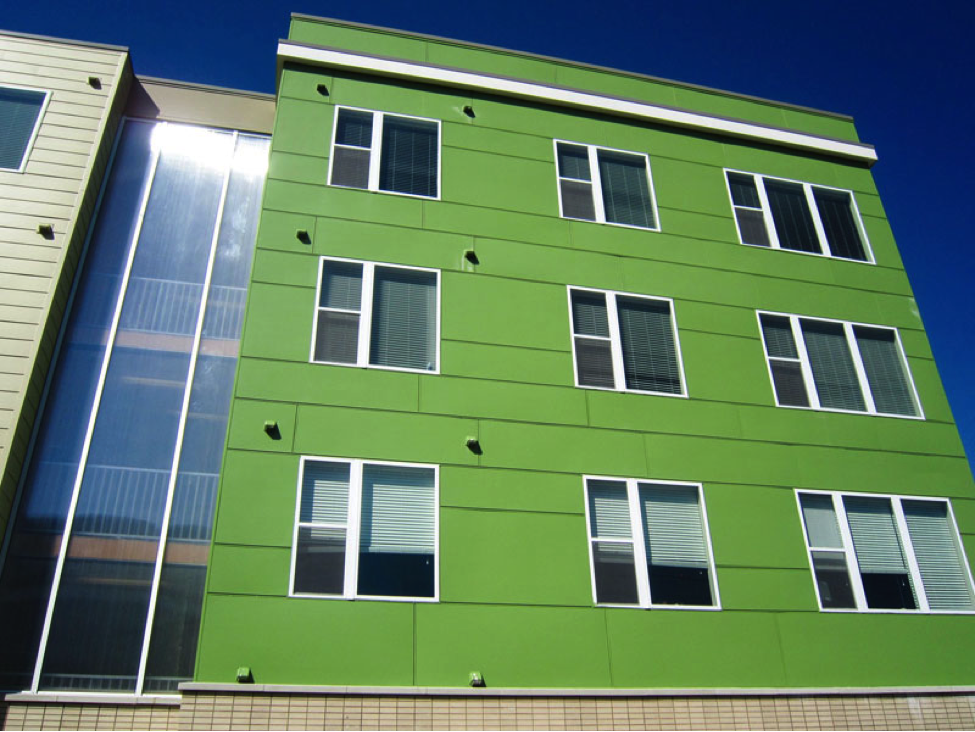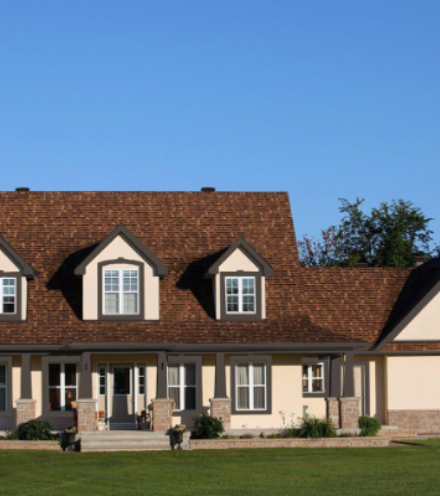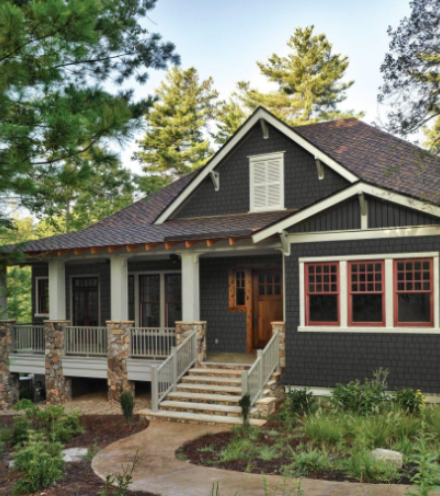Fiber cement siding is quickly catching on as the durable, attractive alternative to wood or vinyl siding for the home. Most people who think of it, however, may not realize all the many different looks that can be created for your homes or building’s exterior using it.

Because the boards or panels can be formed in so many different ways, fiber cement siding can be used to clad nearly any type of exterior, giving you a myriad of different looks.
1. Installed as panels with the joints between them highlighted, fiber cement siding can become a contemporary, industrial covering for multi-family dwellings, office buildings, or single family homes. The siding can be painted any color, with or without contrasting trim to help bring out different architectural features, in this case the brick and metal trim of the building.

2. Fiber cement panels can be cast in numerous shapes and sizes as well. With the joints color matched to the panels, and a mixture of different sizes and shapes, fiber cement gives this building a fun, fluid, and contemporary exterior that highlights this section. Contrasting with the glass and the more traditional paneling on the building’s other side, the larger panels help to open up the space, creating a more streamlined look.

3. The joints between the panels don’t have to be contrasting or left open; filler panels of fiber cement in the same color as the larger panels help to create a transitional exterior for this building. With the look and grain of real wood, this helps give the building a contemporary-rustic feel that complements the fieldstone and the modern window casings.

4. Fiber cement siding isn’t just confined to exterior walls, either. In this case, the two-toned siding is also used on the soffits and the underside of the overhang. The different colors used on the siding emphasize the different sizes of the boards, adding depth and interest to the building’s exterior.

5. Fiber cement siding doesn’t have to fall only into the contemporary category; it can also provide you with numerous looks for more traditional homes. In this case, the majority of the home is covered in horizontal lap siding that complements the style of the home. Accenting the upper portion are larger, vertical panels highlighted by contrasting joints that pick up the colors from the window casings and trim to add additional interest to the design as a whole.

6. The versatility of fiber cement is well highlighted in this contemporary home. Thin board and batten-style siding covers much of the home’s exterior, while larger, vertically stacked panels with contrasting joints line the sides. The same board and batten-style siding also covers the underside of the eaves and overhangs on the home, giving it a sleek, streamlined appearance.

7. Horizontal lap siding isn’t the only way that fiber cement can be used to create a more traditional covering for the home; in this case shakes, or shingles, are paired with the lap siding to highlight the upper story of the home. These are paired with other traditional architectural details framing the windows and running alongside the deck to give the home the style and design of a chateau.

8. Get the look of a rustic cabin, but without the maintenance and expense of wood by mixing materials. Fiber cement siding pairs beautifully with real wood and stone to help cut down on the maintenance, while preserving the beauty of rustic retreats. Fiber cement can be painted or stained in the same colors as wood, and because it’s formed in a mold with real pieces of wood, it’s nearly indistinguishable from the real thing even close up.

9. Traditional shakes and shingle siding are possible in a variety of different sizes and styles with fiber cement. The sizes of these shakes varies from piece to piece, giving the home a more authentic looking exterior, and complementing its architecture and original cladding.

10. Vertical panels with matched joints are a great way to produce numerous effects on your home. Matched here with traditional horizontal lap siding on the adjacent building, the fiber cement siding mimics the lines of the roofing, and creates the illusion the building is taller than it actually is.

11. Who says panels need to be square? Fiber cement siding can be shaped to take on a variety of different looks, including sharply angled panels that interlock with contrasting joints on the edges. Paired with a variety of differently shaped panels on either side of the center row, these angled panels help draw the eye effectively straight up the building’s center.

12. Create a pop of color with fiber cement panels. The smooth panels with contrasting joints create a very eye-catching look on this building’s exterior. Because the panels are unlikely to fade or peel, it makes them the ideal surface for creating brilliantly colored exteriors, even in sunny climates.

Fiber cement siding is far more versatile than many competing materials. Create the look you’re after for your home or building with fiber cement, and get durability, interest, and beauty in one.




